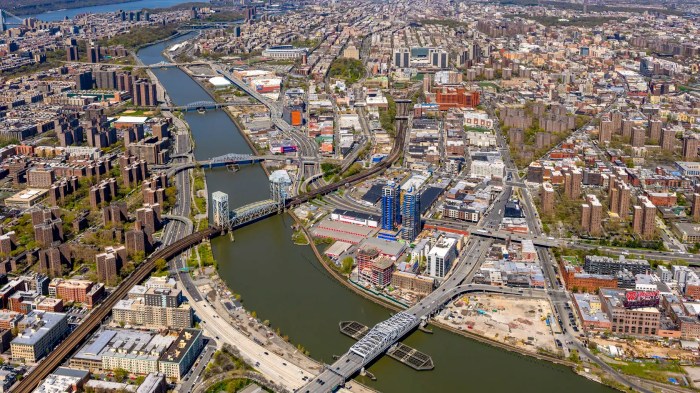While New York City has made tremendous strides in reducing its emission from city-owned buildings — the overall intensity of greenhouse gas emissions from city-owned buildings has decreased 9% — progress has been uneven, as the Bronx has lagged considerably behind their peer boroughs in emissions reductions.
According to a report from think tank NYC Future, since 2014 the Bronx has seen a 7% decrease in its emissions, which lags behind fellow outerboroughs Queens (-9%), Brooklyn (-8%), and well behind Manhattan (-11%). Staten Island registered the greatest reduction in emissions at around 16%.
“New York has made progress reducing the carbon footprint of city-owned buildings, but progress has been uneven,” says Eli Dvorkin, policy director at the Center for an Urban Future. “New York needs to ramp up the pace of decarbonization and focus on buildings and areas that are falling behind, including CUNY buildings and city-owned buildings in the Bronx.”
The city has earmarked 2050 as their emission-free deadline, despite calls from climate activists to be more urgent in their zero-emissions strategy. In the Bronx, which has the highest number of Black and brown neighborhoods affected by the instability of climate change in New York City, emissions are particularly harmful in areas such as the South Bronx’s Asthma Alley.
Climate advocates also expressed frustration at the failure of climate bills in this past legislative session, such as the All-Electric Buildings Act, which aims to cut carbon emissions across the state and require new buildings to have all-electric appliances for space and water heating and cooking by 2023.
“There’s no doubt that electrification can help drive reductions in greenhouse gas emissions from buildings,” said Dvorkin. “However, that particular legislation would only apply to the construction of new buildings, while so much of the challenge for the city is to reduce emissions intensity from existing buildings, many of which are decades old and in need of major energy efficiency upgrades and investments in decarbonization.”
A plan by the state’s 22-person Climate Action Council is set to be finalized by the end of the year, where state climate officials look to reach zero-emissions in the state’s power sectors by 2040 and mandate at least an 85% reduction in emissions by 2050.
Buildings owned by the city Department of Education have taken a major step toward the city’s zero-emission goal, with a 14% decline in emissions intensity across its 981 building portfolio — the largest number of buildings of any agency in the data set.
Also, steep declines in emissions, of 21%, in both the Administration for Children’s Services and Department of Homeless Services buildings, a 17% decrease at NYC Health + Hospitals, and a 16% decrease at both the Brooklyn Public Library and Department of Citywide Administrative Services buildings have helped power the city’s overall 21% decline in emissions.
While the FDNY (-9.1%), Cultural Institutions Group (-7.8%), New York Public Library (-5%), Department of Health and Mental Hygiene (-3.1%), and Department of Sanitation (-2.1%) all saw reductions in their building emissions, the report suggests it did so at a higher rate, limiting the city’s overall progress.
The greatest emission increases, according to the report, have been among the 117 City University of New York (CUNY) buildings included in the city’s data, which registered a 15% rise in emissions intensity from 2014-2019.
The report concludes that achieving the city’s goal of net-zero carbon emissions by 2050 will almost certainly require a new level of investment in decarbonizing CUNY and other city agencies that are falling behind the emissions-reduction curve, with a particular focus on the Bronx, Queens and Brooklyn.
Average emissions also rose in buildings managed by the Department of Environmental Protection (+6.8%), the Department of Corrections (+4.6%), the Queens Public Library (+3.5%) and the Department of Parks and Recreation (+1.1%).
The Office of the Chief Medical Examiner, Department for the Aging, and Department of Housing Preservation and Development all also saw emissions per square foot grow over this period.
Reach Robbie Sequeira at rsequeira@schnepsmedia.com or (718) 260-4599. For more coverage, follow us on Twitter, Facebook and Instagram @bronxtimes





















